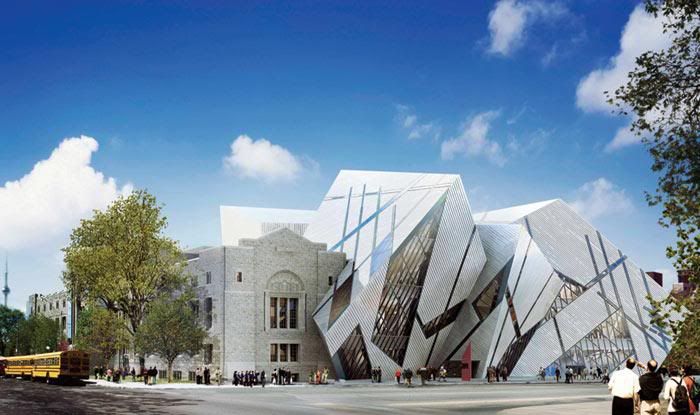Architecture these days seems to be a balancing act, literally.
 |
Toronto's new Royal Ontario Museum
The new Royal Ontario Museum, to be completed in June 2007 (I had last posted that it would have been in January 2007) is one of the latest examples.
Architects these days juggle between engineering, artistic and functional roles. But, they hold on to the artistic the most. And true to modern traditions, that means primarily self-expression.
 |
The Turning Torso
The Turning Torso, designed by Spanish architect Santiago Calatrava, is supposed to represent the twisting human body from a drawing that he made. It took four years to complete and was millions (of Swedish currency, I presume) over budget.
In the end, the building looks as incongruous as the new ROM, and just as unstable.
So, what is behind this rush of strange and daunting buildings? I believe it is a disconnection between the architect and his environment, as both the ROM and the Torso testify, and as I wrote in these earlier posts on a number of other buildings.
Geography is of paramount importance in all the arts. Once we start ignoring the reality of our surroundings, what else do we have left but our imaginations? Then any twisted shape and form can take over our buildings.
In a later blog, I will write about one of the most important and spectacular examples of how geography influenced architecture, down to the perfect last stone.